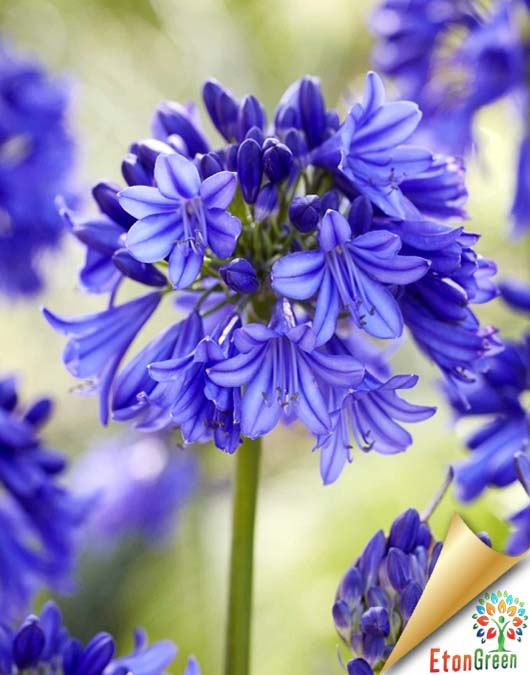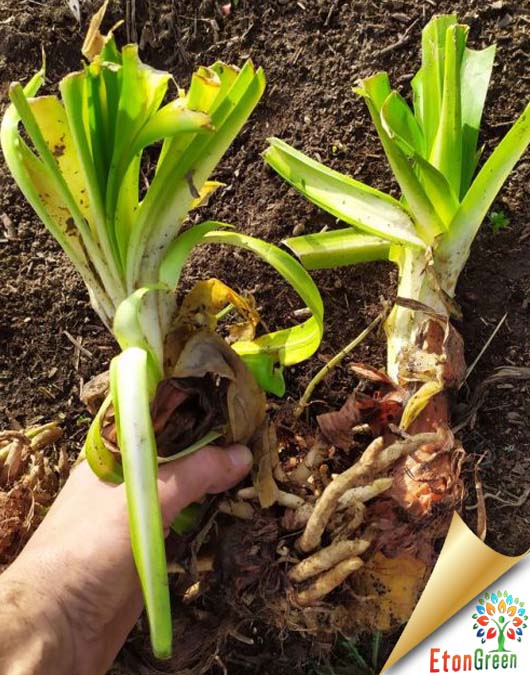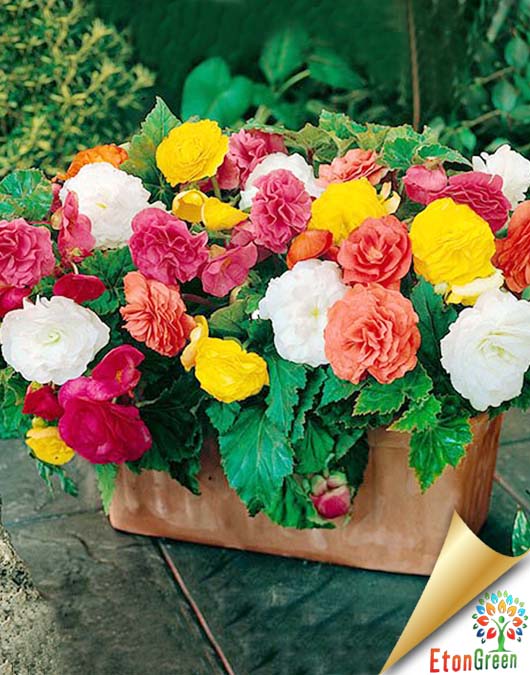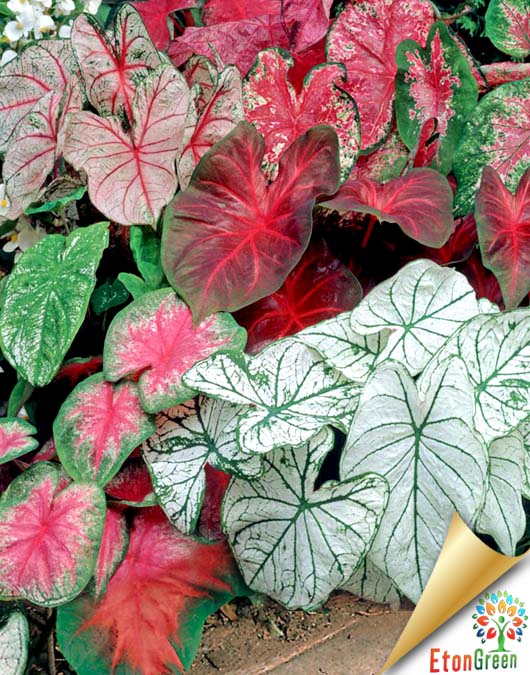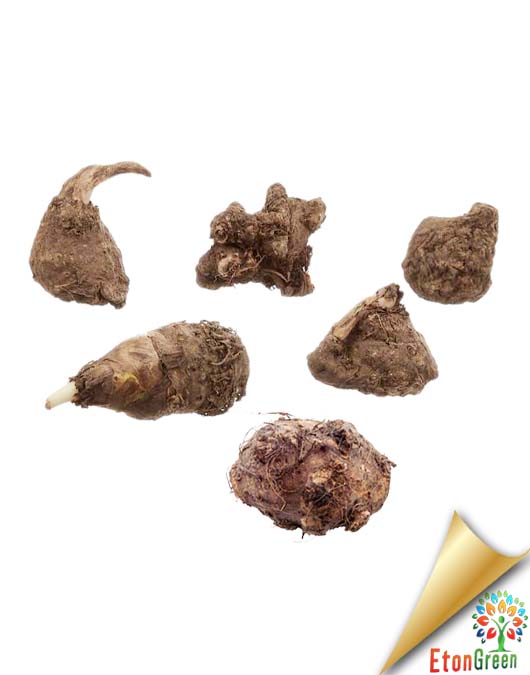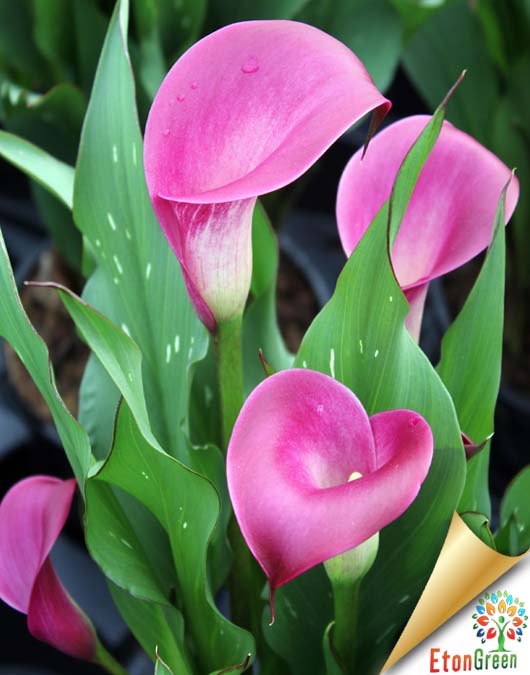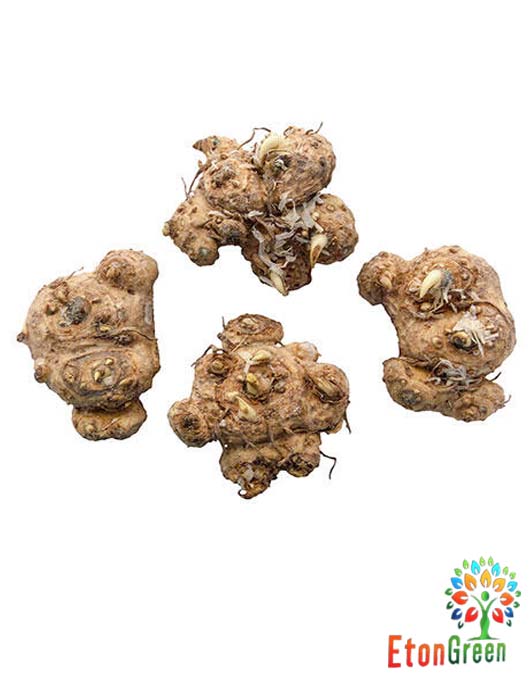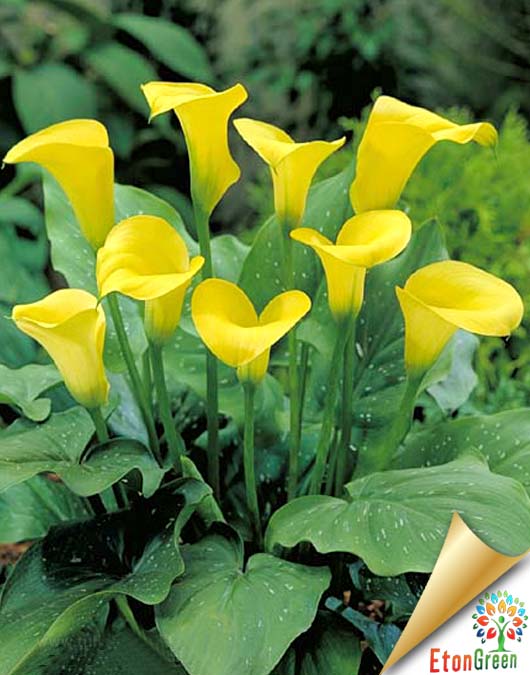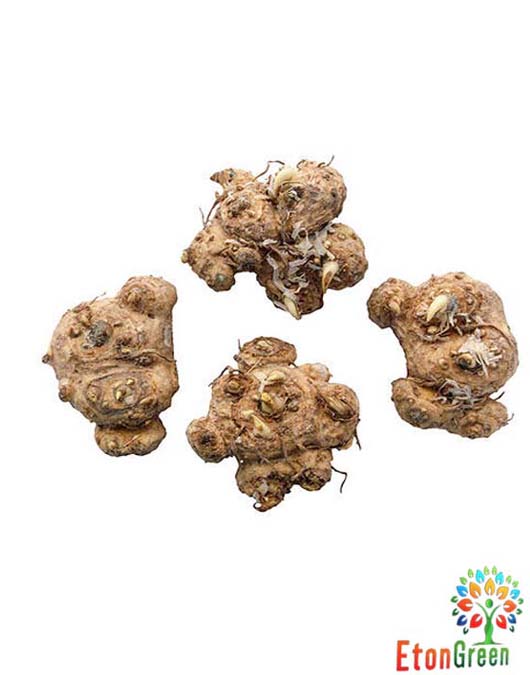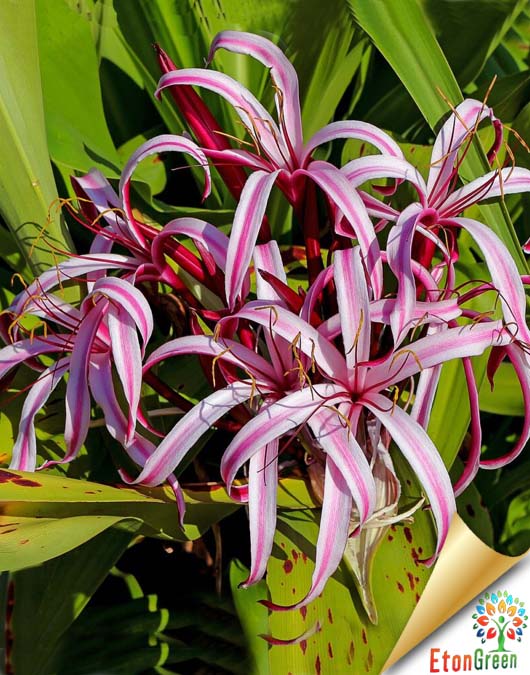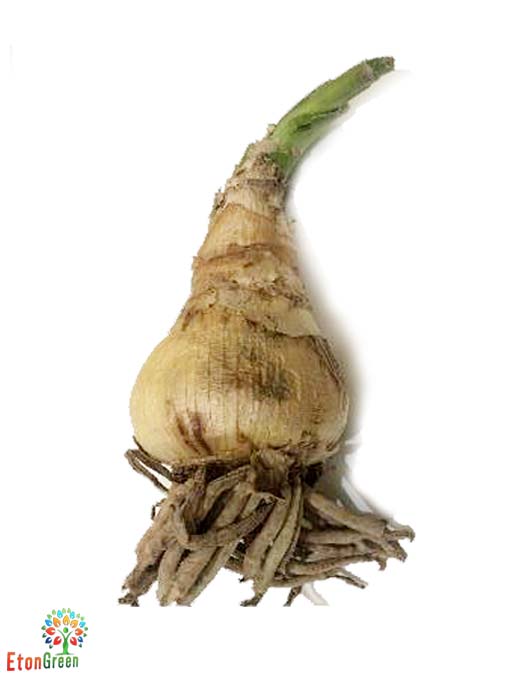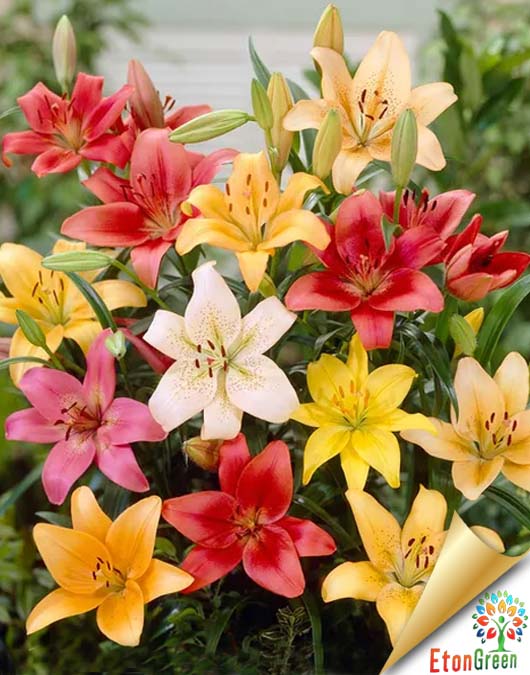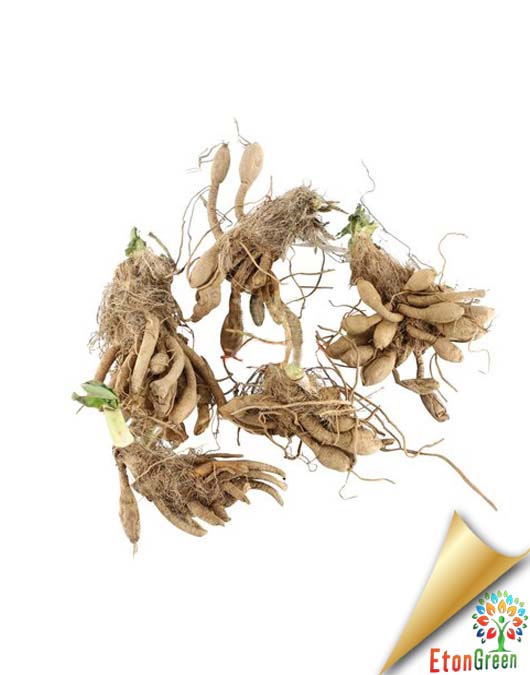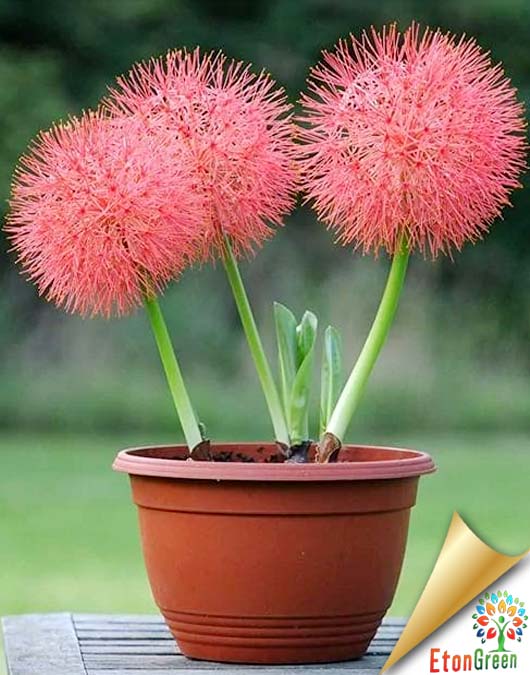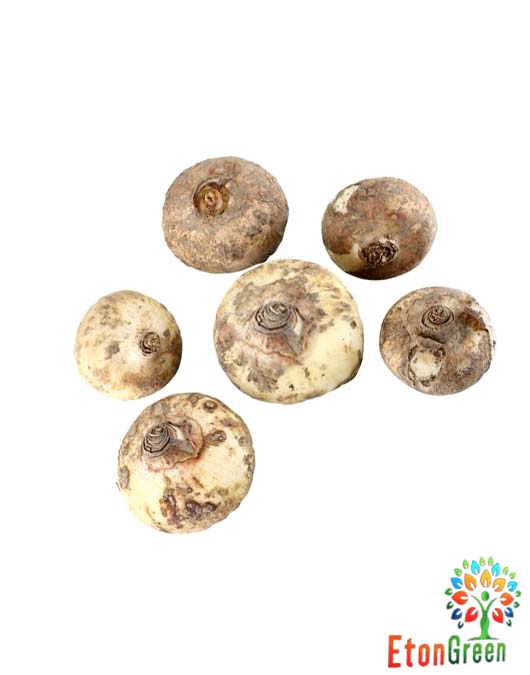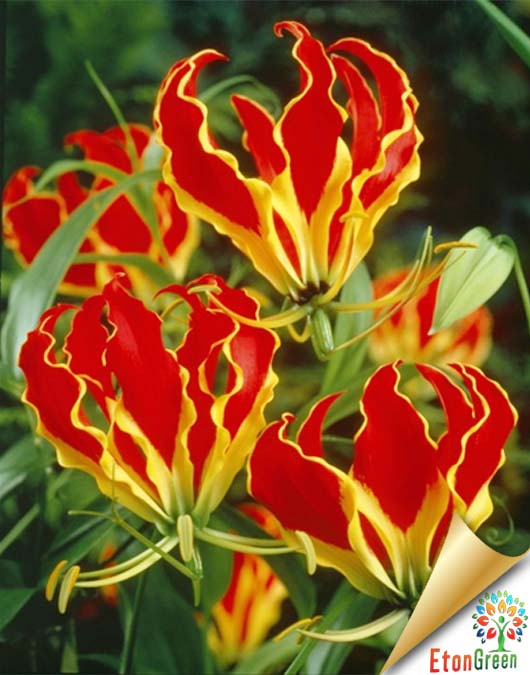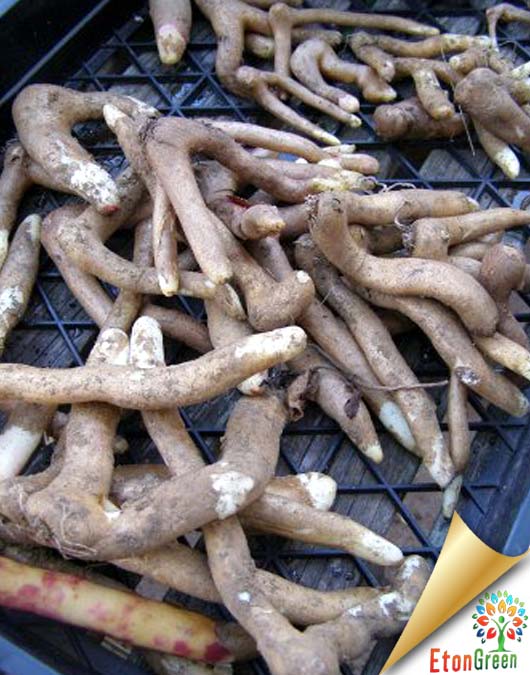- You cannot add "EtonGreen Crinium Red Flower Big Bulb (Set of 2 Bulbs)" to the cart because the product is out of stock.
- Shipping charge ₹ 90 for entire order
- Is it a bulb? Is it a root? No, it’s a begonia—technically a “tuber”—that produces some of the most brilliant blooms in any late-season garden! A very versatile and colorful species, Begonias can be planted in pots, window boxes, the ground, or just about anywhere in either sun or shade.
- Tuberous begonias are popular all over the world. Not only do they have attractive flowers, but their foliage can be quite interesting, too. They can brighten up both your indoor and outdoor gardens.
- Begonia Tuberous Double make your garden look very beautiful as they start blooming in month April. The utterly captivating fragrance of fresh Begonia is hard to beat in a garden.
- Simply plant the bulbs 20cm deep and wait for these lovely Summer blooming perennials to give you a pleasing look.
- Well drained – light, sandy, clay- heavy, moist chalky, alkaline, acidic soil.
Out Of Stock
EtonGreen Caladium Mixed Color Bulbs(Set of 5 Bulbs)
- Shipping charge ₹ 90 for entire order
- The genus Caladium includes seven species that are native to South America and Central America, and naturalized in India, parts of Africa, and various tropical islands. Caladiums are known for their big, heart-shaped leaves that display amazing color combinations of white, pink, red and green.
Caladiums can be grown in containers or clumped together within beds and border. There are numerous varieties of caladiums found in either the fancy-leaved or the strap-leaved cultivar. Often varieties that bloom for a short portion of the season.
Blooming on caladium plants is not common, but tubers planted in favorable locations tend to produce small flower.
-
Common Name Elephant ear, Heart of Jesus, Angel Wings Height Up to 80 cm Flower Color Pale yellow (the flower-like bud on a caladium is a spathe) Bloom Time The flowers are inconspicuous and when grown as annuals, they may not have time to flower at all. Difficulty Level Easy to grow -
Caladium Care
- Caladiums grow from tubers and can be propagated by dividing the tubers
- These plants thrive in moist, well-drained soil and are generally happier in partial shade
- As foliage begins to die down in the fall, reduce water, dig up and air dry bulbs for a week
- Shipping charge ₹ 90 for entire order
- Calla Lilies make fantastic container and landscape plants, Speckled foliage and gorgeous blooms add a touch of elegance wherever they go, and despite their graceful appearance, they’re remarkably easy to grow.
- Delicate and elegant, our Pink Melody Calla strikes the perfect note to bring harmony to any garden. This plant makes a bold statement with color gradients that start with white, dip into rich pink, and then finish with pale green at the eye. Its large size makes it ideal for prominent positions in the garden. Tall and floriferous, with strong stems that beg to be used for cut flower arrangements.
- Calla lily is easy to grow and add a classy look to perennial gardens, cutting gardens and container plantings.
- Calla lilies grow well in pots and planters. They can be mixed with other annuals, but usually perform better in a pot on their own. The flowers last for weeks.
- Shipping charge ₹ 90 for entire order
- Pick these easy-to-grow varieties for the best blooms. It is a rhizomatous herbaceous perennial plant, evergreen where rainfall and temperatures are adequate.
- It has large clumps of broad, arrow shaped dark green leaves up to 45 cm long.
- The inflorescences are large and are produced in spring, summer and autumn, with a pure white spathe up to 25 cm and a yellow spadix. The spadix produces a faint, sweet fragrance.
- Dig up the rhizomes in autumn, usually after the first frost and store for winter.
- Dig a hole about three times as deep as the height of the bulb.
- Set the bulb in the hole, pointy end up, then cover with soil and press firmly
- Space bulbs 8 to 10 inches apart
- Water thoroughly after planting
- Use the potting mix for bulb plantation as Garden soil + Compost + Perlite + Sand (2:2:1:1) Soil + Cocopeat + vermicomposting (2:1:2)
- Keep them adequately fertilized and watered, misting the plant every so often to keep the ambient humidity high
- They are susceptible to aphids so, take a look closely and apply insecticide.
- Shipping charge ₹ 90 for entire order
- Crinum lilies (Crinum spp.) are large, heat and moisture loving plants, producing an abundant array of showy flowers in summer.
- This crinum typically blooms in July, with slender-petaled, fragrant white flower that is highlighted with long, wine red stamens. They are unusual, looking like nothing else in the garden. Crinum leaves are basal, typically long and strap-shaped.
-
Planting And Care
- Protect from winter wet
- Generally disease and pest free
- In fall before the first frost, dig dry and store bulbs for winter in a cool, frost-free location in a medium such as peat or vermiculite that is given minimal moisture
Crinum Lily Care
- Plant 10 cm deep in any moderately fertile, moist but well-drained soil
- Bulbs should not sit in water, the soil should drain well
- Plant the large bulbs in full sun or filtered light in early spring
- Each bulb needs to be planted right side up
- The more pointed end is considered the top
- Plant each bulb in a hole that is just deep enough that its neck is protruding from the soil and the bottom of the bulb is covered in soil
- Covering the entire bulb with soil and planting too deep discourages flowering
- Space bulbs at least 8 inches apart and water the planting site or container well after planting
- Shipping charge ₹ 90 for entire order
- A daylily or day lily is a flowering plant in the genus Hemerocallis, a member of the family Asphodelaceae, subfamily Hemerocallidoideae. Despite the common name, it is not in fact a lily. Gardening enthusiasts and horticulturists have long bred daylily species for their attractive flowers.
- When it comes to plants that look simply stunning but are actually tough as nails, Daylilies are the first to come to mind! Also known as Hemerocallis, these happy bloomers are among the most popular and easiest perennial plants to grow in the sunny garden. Hardy throughout the country, Daylilies require minimal care to produce abundant blooms in a spectacular array of colors and forms
- Plant your Daylilies in the ground in well-draining soil or containers with adequate drainage holes. If you notice water puddles in your outdoor location 5–6 hours after a hard rain, scout out another site or amend the soil with organic material. Site your plants where they will receive full sunlight or light shade in warmer climates.
- Feel free to cut flowers while in bloom for bouquets and other arrangements, as this will not hurt the plants. While Daylily blooms last only a single day, choosing stems with several large buds will provide a few consecutive days of cut flowers.
- Allow your Daylilies to rest for a few months before beginning the next growing cycle.
- Mulch newly planted Daylilies to help manage freezing and thawing soils.
- Amend the soil with compost, finely ground bark, or decomposed manure to raise the level 2″–3″ to improve the drainage. Daylilies appreciate an average amount of moisture but will not survive in waterlogged soil.
- Plant immediately as Daylily roots will dry up if left out of the ground for too long.
- Expect new top growth to form just a few weeks after planting, with speed depending on the amount of available warmth and moisture.
Out Of Stock
EtonGreen Football Lily Pink Flower Bulbs (Set of 5)
- Shipping charge ₹ 90 for entire order
- Scadoxus multiflorus is the scientific name of football lily. This perennial grows from a rhizomatous bulb. It has a false stem as leaves are wrapped together. Leaves may appear after flowering or with them. A false stem can grow up to 60 cm.
- Football lily Bulb This name is a synonym of Scadoxus multiflorus (Martyn) Raf. Each plant will produce only one flowerhead in a season. Blood lily is a bulbous plant with leaves on short, speckled stalks. The flower stalk bears a rounded inflorescence, 8-12 cm across. The plant may live for many years and will flower annually indoors.
- Common Name- Football lily, blood lily, ball lily, blood flower, Katherine-wheel, oxtongue lily, poison root and powderpuff lily
- Scientific Name- Scadoxus multiflorus
- Watering- Medium
-
Caring for Haemanthus Multiflorus
- Pruning is generally not required, just remove the spent flowers.
- Bulbs may be planted outdoors directly in the garden in spring after last frost date.
- Reduce moisture in the winter season.
- Shipping charge ₹ 90 for entire order
- Pick these easy-to-grow varieties for the best blooms. It is a rhizomatous herbaceous perennial plant, evergreen where rainfall and temperatures are adequate.
- It has large clumps of broad, arrow shaped dark green leaves up to 45 cm long.
- The inflorescences are large and are produced in spring, summer and autumn, with a pure white spathe up to 25 cm and a yellow spadix. The spadix produces a faint, sweet fragrance.
- Dig up the rhizomes in autumn, usually after the first frost and store for winter.
- Dig a hole about three times as deep as the height of the bulb.
- Set the bulb in the hole, pointy end up, then cover with soil and press firmly
- Space bulbs 8 to 10 inches apart
- Water thoroughly after planting
- Use the potting mix for bulb plantation as Garden soil + Compost + Perlite + Sand (2:2:1:1) Soil + Cocopeat + vermicomposting (2:1:2)
- Keep them adequately fertilized and watered, misting the plant every so often to keep the ambient humidity high
- They are susceptible to aphids so, take a look closely and apply insecticide.

